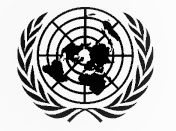Entry into force: 5 October 1978, in accordance with its article IX (3). Pursuant to its article VII, the Convention is of unlimited duration.
Status: The Convention is signed by 48 States, of which 16 have not ratified it. Today it has 78 States parties. To see its accession status, please click here.
Depositary: Secretary-General of the United Nations.
Convention text: ENMOD text on the UNODA Treaty Database and certified true copy
History
The problem of artificial modification of the environment for military or other hostile purposes was brought to the international agenda in the early 1970s. In July 1974, USA and USSR agreed to hold bilateral discussions on measures to overcome the danger of the use of environmental modification techniques for military purposes and three subsequent rounds of discussions in 1974 and 1975. In August 1975, USA and USSR tabled identical draft texts of a convention at the Conference of the Committee on Disarmament (CCD), where intensive negotiations resulted in a modified text and understandings regarding four articles of this Convention in 1976.
The Convention was approved by resolution 31/72 of the General Assembly of the United Nations on 10 December 1976, by 96 to 8 votes with 30 abstentions.



Structure of ENMOD
The Convention contains ten articles and one Annex on the Consultative Committee of Experts. An integral part of the Convention is also the Understandings relating to articles I, II, III, and VIII. These Understandings are not incorporated into the Convention but are part of the negotiating record and were included in the report transmitted by the Conference of the Committee on Disarmament to the United Nations General Assembly in September 1976 Report of the Conference of the Committee on Disarmament, Volume I, General Assembly Official records: Thirty-first session, Supplement No. 27 (A/31/27), New York, United Nations, 1976, pp. 91-92.
Scope of ENMOD
States parties undertake not to engage in military or any other hostile use of environmental modification techniques having widespread, long-lasting or severe effects as the means of destruction, damage or injury to another State party (article I). It is noteworthy that efforts to clarify or eliminate the restrictive clauses “having widespread, long-lasting or severe effects” (known as the “troika”) were made already during the original negotiations, as well as at the review conferences, however consensus on such a removal could not be reached.
Environmental modification technique: Any technique for changing – through the deliberate manipulation of natural processes – the dynamics, composition or structure of the earth, including its biota, lithosphere, hydrosphere and atmosphere, or of outer space (article II).
Compliance
Article V of the Convention provides for a consultation mechanism to solve any problem arising in relation to the objectives and in the application of the provisions of the Convention, including the establishment of a Consultative Committee of Experts to be chaired by the Secretary-General of the United Nations.
Review Process
According to article VIII, five years after the entry into force of the Convention, a conference of the States Parties to the Convention shall be convened by the Depositary at Geneva, Switzerland. It also provides that at intervals of not less than five years thereafter, a majority of the States Parties to the Convention may obtain, by submitting a proposal to this effect to the Depositary, the convening of a conference with the same objectives, and that if no conference has been convened within ten years following the conclusion of a previous conference, the Depositary shall solicit the views of all States Parties to the Convention, concerning the convening of such a conference. The Depositary shall take immediate steps to convene such a conference if one third or ten of the States Parties, whichever number is less, respond affirmatively.
The First Review Conference of the Convention was held in Geneva in September 1984, with the attendance of 35 States parties. The Second Review Conference took place in September 1992. All documents from these Review Conferences are available here. The Final Document of the Second Review Conference provided that if no Review Conference were held before 2002 the Depositary would be requested to solicit the views of all States Parties concerning the convening of such a Conference in accordance with paragraph 3 of article III of the Convention.
Against this background, the Secretary-General of the United Nations has initiated a process of soliciting the views of the States parties to the Convention on the convening of the Third Review conference of the States parties to the Convention, available in English, French, and Spanish.
Given that less than ten of the States Parties respond affirmatively to his query, the Secretary-General circulated the following communication to the States parties of ENMOD, available in English, French and Spanish.

